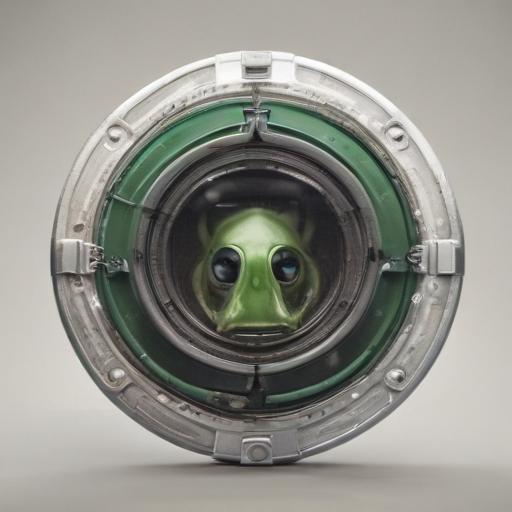Ahead of the FX premiere of Alien: Earth on August 12, a curated list looks back at four decades of extraterrestrial cinema, showcasing how aliens have been used to tell every kind of human story. From terrifying encounters in claustrophobic space thrillers to big-screen parables about identity, fear, and hope, the catalog demonstrates that alien movies are less about the visitors and more about what they reveal about us.
Key themes and standout titles from the lineup
– Classic sci‑fi milestones: 2001: A Space Odyssey (1968) asks big questions about evolution, technology, and the unknown, leaving viewers with enduring philosophical puzzles rather than easy answers.
– Horror and body horror: Alien (1979) remains a touchstone for primal fear, while The Thing (1982) leans into paranoia and the terror of not knowing who you can trust.
– Human resilience and heroism: Aliens (1986) pairs Ripley with a seasoned squad to confront a relentless infestation, turning survival into a test of leadership and courage. Pitch Black (2000) sharpens the tension by forcing a group to navigate darkness and danger together.
– Thoughtful alien contact: Arrival (2016) centers on communication and how language can reshape culture, offering a cerebral counterpoint to more action-driven alien films.
– Social allegory and the Other: District 9 (2009) uses aliens as a mirror for real-world prejudice and systemic injustice, while Signs (2002) blends doomsday tension with human questions about belief and media.
– Family, friendship, and found kin: E.T. the Extra-Terrestrial (1982) and The Iron Giant (1999) use their extraterrestrial visitors to explore belonging, love, and the meaning of home.
– Satire, spoof, and meta-commentary: Spaceballs (1987) and Galaxy Quest (1999) wink at pop‑culture fandom and genre tropes while delivering genuine heart and humor.
– Big, adventurous epic energy: The Day the Earth Stood Still (1951) and Close Encounters of the Third Kind (1977) celebrate first contact as a hopeful invitation to humanity to wake up to something larger than ourselves.
– Modern twists and diverse tones: Nope (2022) blends Western, horror, and social critique to examine spectacle, responsibility, and myth-making in the age of mass media.
– Family-friendly and animated approaches: Lilo & Stitch (2002) and The Iron Giant bring warmth and humor to alien storytelling, expanding the genre’s appeal beyond traditional sci‑fi and horror crowds.
– Interstellar epics and myth-making: Dune (2021) and Avatar (2009) push world-building to dazzling visuals and immersive scale, inviting viewers to step into fully realized alien ecosystems.
Notes for editors and readers
– The list spans decades and genres, illustrating how alien storytelling can function as horror, allegory, adventure, romance, and satire—all while reflecting on what it means to be human.
– If you’re planning a viewing binge, this catalog offers both timeless classics and contemporary reimaginings, providing entry points for different moods—whether you crave adrenaline, wonder, or introspection.
– Potential follow-ups could include: pairing picks by theme (first-contact films, alien invasions as social allegory, or alien-child friendships), or offering a streaming guide with current availability and rental options to help readers plan their watchlists.
Why this matters now
Aliens in cinema have long served as a mirror for our own fears, hopes, and social anxieties. The breadth of titles here shows how filmmakers continually reframe the outsider to illuminate human truths—whether through terror, humor, or tender humanity. As Alien: Earth debuts, this roster invites audiences to revisit or discover these stories and consider what they say about our world today.
Summary
The compilation highlights how alien movies have evolved from straight horror into a versatile storytelling medium that probes language, power, identity, and belonging. It also underscores the enduring appeal of spacefaring cinema as a lens for examining who we are and how we respond to the unknown. For fans and newcomers alike, the lineup offers a rich palette of tones, from pulse-pounding thrills to heartwarming moments of connection.
Editorial notes and possible enhancements
– Consider adding short capsule reviews for each title (one to three sentences) to maintain reader engagement and boost SEO with varied keywords.
– Include a “watch next” section linking to streaming options and a suggested viewing order to help readers plan marathon sessions.
– Add alt text ideas for images (e.g., “Ripley stands ready in the ventilation shaft aboard the Nostromo,” “E.T. reaches toward the bicycle across the moonlit sky”) to improve accessibility.
– Create a companion poll or interactive element asking readers their favorite alien film from the list to increase comments and social engagement.
If you’d like, I can turn this into a WP-ready post with optimized headings, meta description, and internal links to related articles, plus a brief image caption set to accompany each entry.
